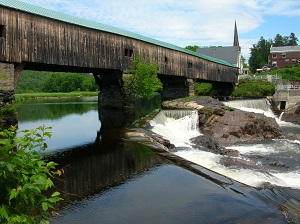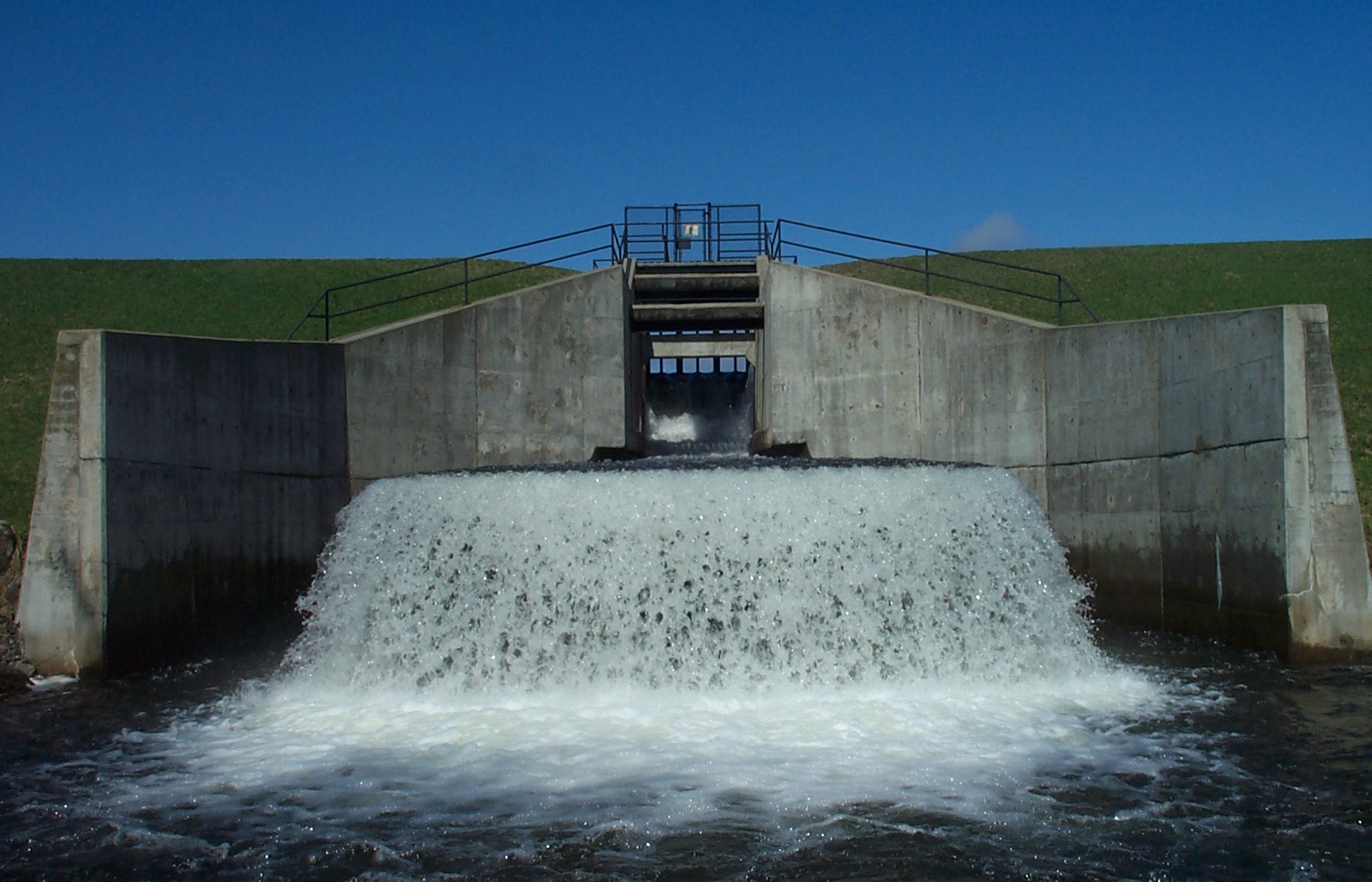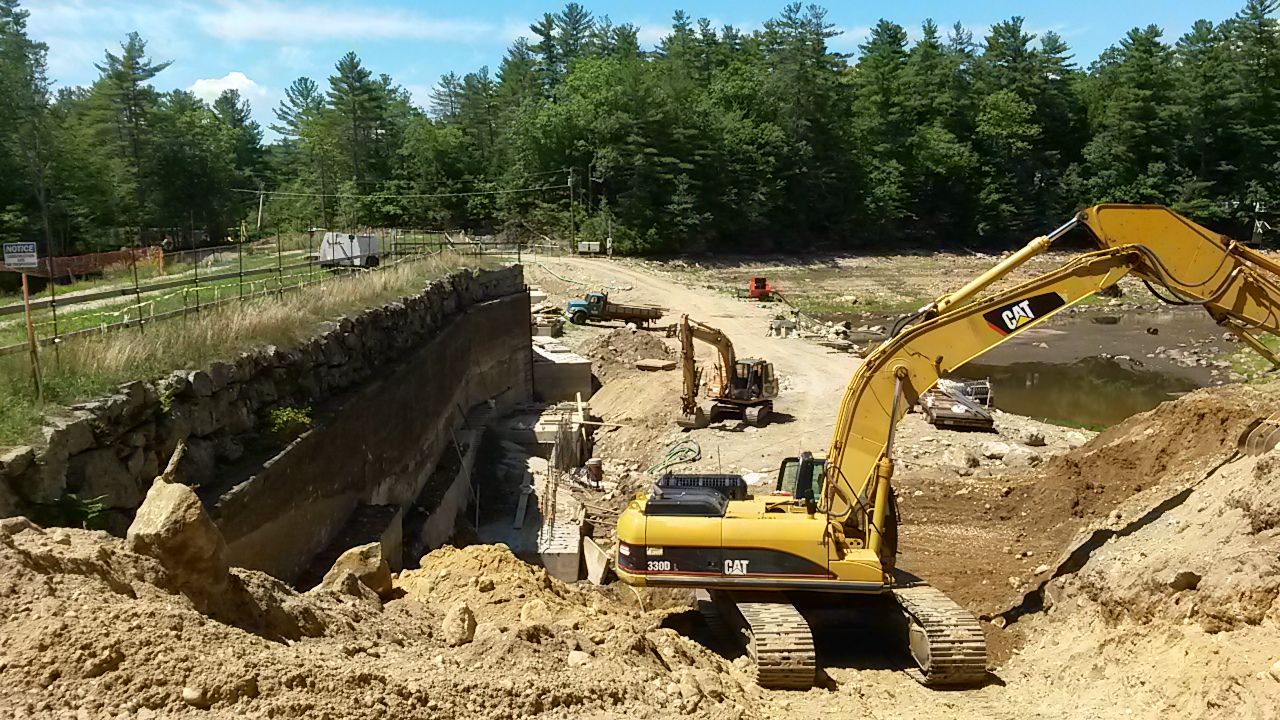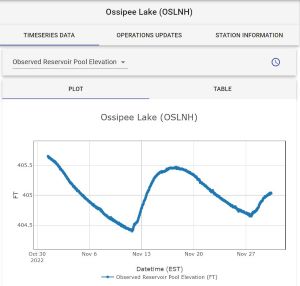Dam Safety, Maintenance and Management
Ensuring all dams in New Hampshire are constructed, maintained and operated in a safe manner.
 The NHDES Dam Bureau regulates the repair, reconstruction, maintenance and operation of existing dams, reviews design plans and issues decisions for the construction, operation, and maintenance of new dams. By reviewing applications for constructing and reconstructing dams in New Hampshire, the Dam Bureau serves a pivotal role in balancing the interests of all parties between preservation/protection of the natural resource and stimulation/sustenance of New Hampshire’s vibrant economy.
The NHDES Dam Bureau regulates the repair, reconstruction, maintenance and operation of existing dams, reviews design plans and issues decisions for the construction, operation, and maintenance of new dams. By reviewing applications for constructing and reconstructing dams in New Hampshire, the Dam Bureau serves a pivotal role in balancing the interests of all parties between preservation/protection of the natural resource and stimulation/sustenance of New Hampshire’s vibrant economy.
The Dam Bureau is also responsible for regulating the retention and/or release of stored water to support a variety of uses (hydropower generation, lake drawdowns to make room for spring runoff, flood flow management and mitigation, fisheries, and water quality protection) for both public and private purposes. At times these various uses can be in direct conflict with one another.
The Dam Bureau attempts to ensure that the multiple interests using surface waters for boating, fishing, power generation, wastewater assimilation, aesthetics, irrigation and water supply do not exhaust the availability of the resource or create an imbalance in favor of one use over the others. In addition to supervising certain water resources, the Dam Bureau oversees the development of hydroelectric power generation at state-owned dams. This helps to expand the New Hampshire’s clean renewable energy initiative.
NHDES has created a dam removal process that combines the Dam Safety Program with the Wetlands Program to identify, evaluate and (when warranted) remove unwanted or unneeded dams along New Hampshire’s rivers and streams.
The Dam Bureau’s activities are governed by RSA 482 and New Hampshire Administrative Rules Env-Wr 100-800.

Dam Bureau Overview and Fact Sheets
Learn more about what the NHDES Dam Bureau does, what constitutes a dam, the different types of dams, failure modes, rules references and much more.

Required construction and repair permits
Permits are required for all non-permitted existing dams, the repair or reconstruction of dams, and the construction of new dams and hydro-energy production facilities. An application to construct a dam must be filed by the property owner(s) on which the proposed dam is located. Learn more about dam permits with these guidance documents.
 Real-Time Lake and River Level Data
Real-Time Lake and River Level Data
The Dam Bureau and U.S. Geological Survey (USGS) each operate their own networks of hydrologic gauging stations throughout the state of New Hampshire, which provide real-time lake and river level data for many watersheds in New Hampshire. Additionally, many of these stations provide precipitation, temperature, water temperature and other meteorological data.
Did You Know?
Did You Know?
Under New Hampshire law, if you are an owner/operator of a dam, a permit is required. Find out if your structure qualifies as a dam and get access to permit forms and guidance.




